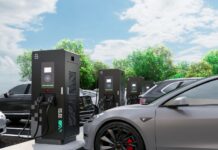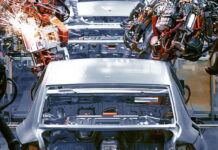The shift to electric vehicles is accelerating rapidly as global efforts to reduce carbon emissions intensify. Electric vehicles are no longer niche alternatives—they are becoming central to sustainable transport solutions worldwide. In this context, the evolution of EV charging technology is critical. To enable mass adoption, charging infrastructure must be faster, smarter, and more integrated. GRIDSERVE stands at the forefront of this transformation, developing innovative charging technologies that will redefine how we power electric transportation in the near future.
Emerging trends and modern technology—like AI, advanced batteries, and smart grid integration—are dramatically improving the EV experience. By 2030, EV charging won’t just be about refilling a battery; it will be about seamless, rapid, and multifunctional energy management that supports daily life and broader grid stability.
Ultra-Fast Charging and Breakthrough Battery Technology
Charging times are set to plummet dramatically. Current EV charging from 20% to 80% could soon take as little as five minutes—a result of EVs supporting over 300kW charging and cutting-edge chargers exceeding 1MW power output, such as BYD’s e⁴ Megawatt Flash technology. This leap means nearly 200 miles of range can be added in just ten minutes, eliminating range anxiety and making EVs practical for long journeys.
Simultaneously, solid-state batteries promise to revolutionize EV range and efficiency. These batteries allow for smaller, lighter packs that deliver more mileage per kilowatt-hour. A 60kWh solid-state battery could provide over 300 miles, compared to the current need for 100kWh packs for similar range. This advancement reduces vehicle weight, further boosting efficiency and driving range.
AI-Powered Smart Charging: Seamlessness and Efficiency
Artificial intelligence (AI) will play a pivotal role in creating a seamless and personalized EV charging experience. Innovations like Plug & Charge will automate authentication and start charging immediately on plug-in, making the process effortless. AI algorithms will also optimize battery pre-conditioning, ensuring batteries are at the ideal temperature and ready to charge at maximum speed upon arrival.
Moreover, improved data sharing between automotive manufacturers and charging networks will enhance cross-border roaming, enabling hassle-free EV travel across countries like the UK and Europe. This connectivity will increase reliability and convenience, offering drivers a smooth experience no matter where they are.
Bidirectional Charging: Powering Homes and Stabilizing Grids
Vehicle-to-Grid (V2G) and Vehicle-to-Home (V2H) technologies are transforming EVs into dynamic energy assets. They enable cars to supply power back to homes or the electricity grid during peak demand periods. This integration is especially beneficial for households equipped with solar panels and smart tariffs, helping reduce energy bills and promoting renewable energy usage.
Fleet operators will increasingly adopt bidirectional capabilities to optimize energy use, contributing to grid stability and cleaner energy systems. This two-way charging turns EVs into part of a sustainable energy ecosystem, making transportation and energy management symbiotic.
Electrification of Heavy Goods Vehicles: Green Freight Solutions
Electrifying heavy goods vehicles (HGVs) is key to decarbonizing some of the highest-polluting transport sectors. The Electric Freightway initiative, alongside others, is spearheading this transition by deploying electric trucks and corresponding megawatt-scale charging infrastructure at motorway hubs and fleet depots. Electric trucks offer quieter operation and significantly reduce noise pollution and harmful emissions near highways and urban centers.
This shift will greatly improve urban air quality and contribute to national carbon reduction targets, making heavy transport cleaner and more sustainable.
The Prospects of Dynamic Wireless Charging
Wireless charging for EVs is a technology with great potential but limited adoption due to efficiency and cost constraints. Trial projects exploring in-road wireless charging primarily target stationary vehicles, such as taxis waiting at ranks that could recharge without cables. While continuous charging on highways remains unlikely soon, such innovations broaden the scope for convenient EV usage.
Wireless systems promise to make EV ownership even more accessible and easy, supporting the expansion of electric transport in diverse settings.
Together, these advancements led by GRIDSERVE highlight a future where electric vehicles become deeply intertwined with energy systems, enhancing convenience and sustainability. Faster charging, smarter energy management, and innovative infrastructures will reshape transportation, reduce environmental impact, and empower EV drivers worldwide. The journey to 2030 will transform EV charging from a mere necessity into an integrated, intelligent, and community-empowering experience.







